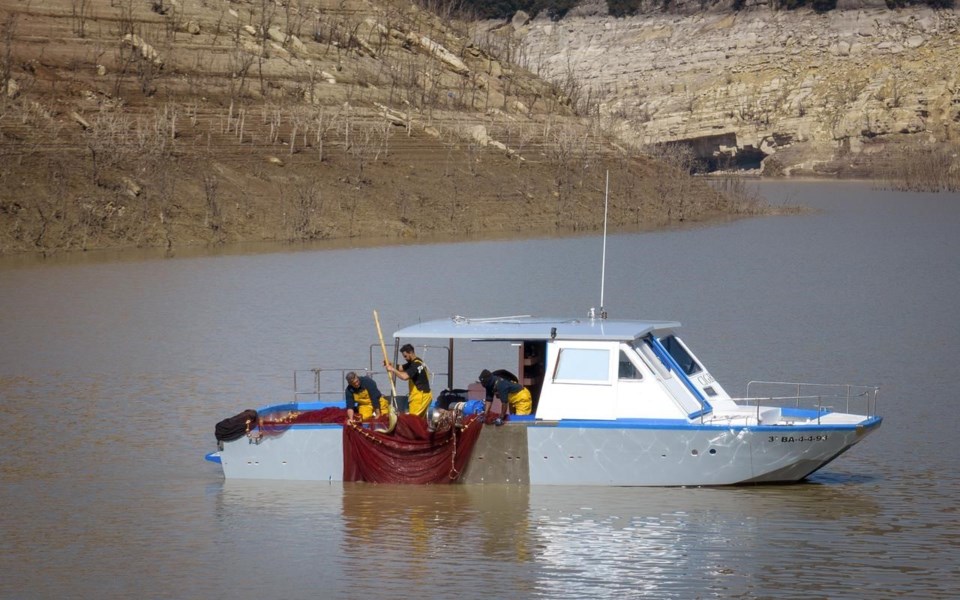VILANOVA DE SAU, Spain (AP) ‚Äî The medieval church of Sant Rom√Ý disappeared from view in the 1960s, when the town of Vilanova de Sau, an hour north of Barcelona, was flooded to create a reservoir.
In the past three decades, its spectral belltower has broken the surface several times, serving as a punctual reminder of Spain’s fragile water resources.
But today the church’s tower, its nave and the building’s foundations are all exposed. The bare, steep ridges of the Sau reservoir show how far its levels have receded, and the cracked earth around the remaining pool of water is trodden by tourists attracted by the ghost village’s reappearance.
Drought in Spain’s northeast reached “exceptional” levels last month, menacing access to drinking water for 6 million people in the Barcelona metropolitan area.
The Sau reservoir’s water levels now stand at 9% of total capacity, according to Catalan Water Agency data, so officials have taken the decision to remove its fish to stop them from asphyxiating. But the race against time to save them may already be lost, with many dead fish already floating on the surface.
The remaining water in the basin is being diverted to another, fuller reservoir nearby to stop its quality deteriorating to the point of becoming undrinkable.
Spain has officially entered a period of long-term drought, the country’s Aemet weather agency said last week, owing to high temperatures and low rainfall over the past three years.
But in Catalonia, the situation is critical, as average reservoir levels hover around 27% of their capacity. There are restrictions on agricultural and industrial water use, and it is forbidden to use drinking water for washing cars or filling swimming pools.
Meanwhile, Spain as a whole has warmed 1.3 degrees Celsius (2 Fahrenheit) since the 1960s, a phenomenon that is noticeable all year round but especially in summer — when average temperatures have risen by 1.6 degrees.
Emilio Morenatti, The Associated Press




